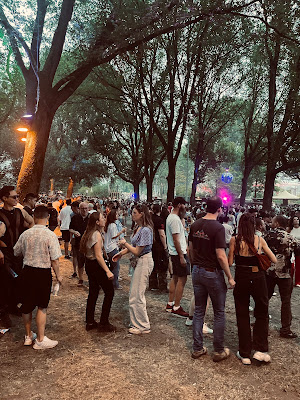I think every day could be the last, because no one truly knows the future. But for me, this thought is deeply connected to the present reality of the Western European continent. Maybe political maps say something different about what defines Western Europe—but maps don’t understand political or cultural language.
Belgium – The heart of the European Union. By lifestyle and mentality, Belgium clearly belongs to Western Europe. You can feel that Western European vibe in everyday life. It’s also the birthplace of revolutionary artists in the techno scene, like
Charlotte de Witte, who to me represents the spirit of modern Belgium. It’s also home to
Amelie Lens. Belgium has a strong economy—after
Luxembourg and the
Netherlands, it’s one of the richest countries in Western Europe. In some aspects, it even surpasses
Germany,
France, or the United Kingdom.
Netherlands – An amazing country with a unique culture. Sometimes it feels like a “Little America 2,” combining the energy and social system of Western Europe with a broader European identity. The architecture is both beautiful and thoughtful.
Water management is advanced, and there are innovative solutions in home energy,
urban infrastructure, and industry. It’s a high-tech society. The public transport system is probably the fastest in Europe—for cars, buses, and trains—and it’s the best place in the world for cyclists (there are more bikes than citizens!).
Sometimes I feel that cars in the Netherlands are not only cleaner in terms of emissions, but also better maintained than in Central Europe. The people are diverse, direct, and vibrant. The cities and events are beautifully organized, supported by strong infrastructure and scenic coastlines. The Dutch are often described as the most active people in Europe, and that shows in everyday life.
I believe environment shapes everything, and the Netherlands creates an active, balanced lifestyle. During sunny summers, the country can feel like a European “Hawaii”—especially in regions like
South Holland,
Rotterdam, or even
Amsterdam. There’s a year-round holiday vibe. People are calm and peaceful, reflecting the national spirit. The Dutch are aesthetically minded, and both their urban and rural surroundings look clean and well-maintained. Agriculture here isn’t just industrial—it often feels integrated into the natural landscape.
The Netherlands was also the first European country to truly adopt English as a second language. Over 90% of Dutch people speak it fluently, making it feel almost native. It’s the second richest country in Western Europe. Dutch children and teens are the tallest in the world. And Dutch penis is the biggest size in Europe.
France – A vibrant and diverse country where each region feels entirely unique. Some areas resemble Central European architecture (like around Nancy), while others reflect the sunny character of the French Riviera—places like
Saint-Tropez or
Monaco. In
Alsace, cities such as
Strasbourg resemble Eastern German architecture. France holds many majestical build and place like is Douaumont. There are peaceful regions and others with more social tension. France includes the Alps and major summer holiday destinations. It’s a nation rich in culture, architecture, and scenic beauty.
Luxembourg – Luxembourg City is recognized by UNESCO, and the country itself blends heritage with modern life. As the richest country in the world, its wealth is visible in infrastructure and quality of life. It’s a beautiful nation that combines history and innovation.
Germany – One of the most powerful economies in the world, and you can feel it across the whole country. Its cities are diverse—some steeped in history, others reflecting a modern, high-tech society. The population is diverse too, especially in places like Berlin.
Berlin is colorful and multicultural—probably more so than most European cities. Munich is modern and, aside from Munich Hauptbahnhof, impressively clean. Frankfurt feels like a crossroads between Eastern and Western Europe, with strikingly complex architecture. Frankfurt Airport itself is a global hub. When you arrive in Cologne, it’s immediately clear that you’re in Western Europe. The green, clean environment around Cologne feels very different from Central Europe. The same goes for Dortmund and Düsseldorf—both the architecture and surrounding landscapes are more reminiscent of the Netherlands than of Eastern Europe. And in Northern Germany, the presence of the sea and distinct architecture create a unique atmosphere of their own.



